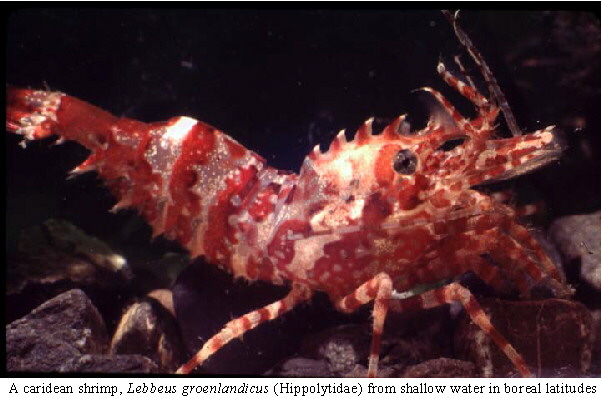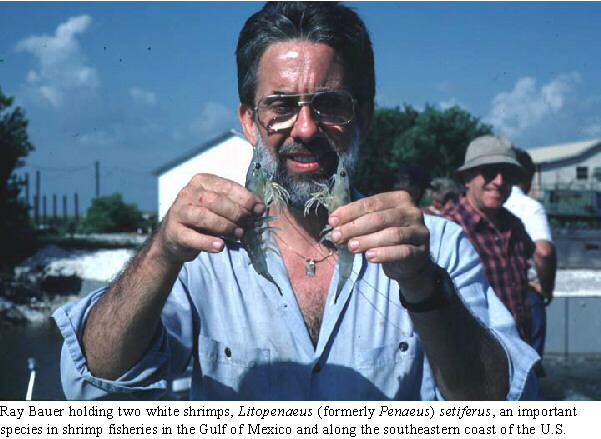

Caridean shrimps are a group of primarily marine crustaceans with a high degree of diversity in body form and habitat. There are over 2500 described species of carideans, in 28 families, which are ecologically important in nearshore habitats from tropical to high latitudes, as well as in pelagic and deep-sea bottom communities. A few families have successfully invaded brackish and freshwater habitats, particularly in tropical and subtropical areas. Caridean species, especially those in the boreal genus Pandalus, make up about 18% of world shrimp fisheries.
Penaeoids are another group of shrimps, distinguished from carideans by their very different reproductive biology (fertilized eggs spawned into the water for development rather than incubated by the female, as in the carideans), as well as by morphological and other biological differences. With only 5 families and about 400 species in tropical and subtropical habitats, their taxonomic and morphological diversity is low compared to carideans. However, penaeoids, especially members of the family Penaeidae, are noted for rapid growth and large population sizes. For this reason, 70% of the world's shrimp production in fisheries and most of that from aquaculture is accounted for by penaeoid species, especially members of the genus Penaeus. This genus has just been revised by Drs. Isabel Pérez Farfante and Brian Kensley, who split the genus into several genera. The species making up the bulk of the U.S. fishery, i.e., the white, brown, and pink shrimps, now have new generic names.

My research has dealt with a variety of aspects of the
biology of these groups, including sexual behavior and mechanics
of insemination, mating strategies, hermaphroditism,
antifouling
mechanisms (especially grooming),
latitudinal
variation in breeding patterns,
ecology of
seagrass species, and camouflage coloration.
These studies have shown me how little we know about these beautiful and
interesting animals.
Back to Home Page.